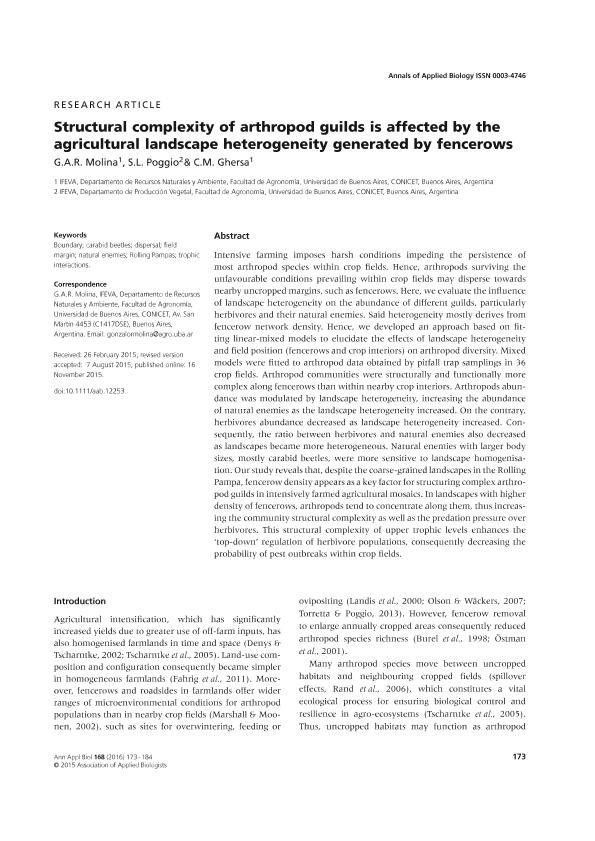Artículo
Structural complexity of arthropod guilds is affected by the agricultural landscape heterogeneity generated by fencerows
Fecha de publicación:
03/2016
Editorial:
Wiley Blackwell Publishing, Inc
Revista:
Annals of Applied Biology
ISSN:
0003-4746
Idioma:
Inglés
Tipo de recurso:
Artículo publicado
Clasificación temática:
Resumen
Intensive farming imposes harsh conditions impeding the persistence of most arthropod species within crop fields. Hence, arthropods surviving the unfavourable conditions prevailing within crop fields may disperse towards nearby uncropped margins, such as fencerows. Here, we evaluate the influence of landscape heterogeneity on the abundance of different guilds, particularly herbivores and their natural enemies. Said heterogeneity mostly derives from fencerow network density. Hence, we developed an approach based on fitting linear-mixed models to elucidate the effects of landscape heterogeneity and field position (fencerows and crop interiors) on arthropod diversity. Mixed models were fitted to arthropod data obtained by pitfall trap samplings in 36 crop fields. Arthropod communities were structurally and functionally more complex along fencerows than within nearby crop interiors. Arthropods abundance was modulated by landscape heterogeneity, increasing the abundance of natural enemies as the landscape heterogeneity increased. On the contrary, herbivores abundance decreased as landscape heterogeneity increased. Consequently, the ratio between herbivores and natural enemies also decreased as landscapes became more heterogeneous. Natural enemies with larger body sizes, mostly carabid beetles, were more sensitive to landscape homogenisation. Our study reveals that, despite the coarse-grained landscapes in the Rolling Pampa, fencerow density appears as a key factor for structuring complex arthropod guilds in intensively farmed agricultural mosaics. In landscapes with higher density of fencerows, arthropods tend to concentrate along them, thus increasing the community structural complexity as well as the predation pressure over herbivores. This structural complexity of upper trophic levels enhances the 'top-down' regulation of herbivore populations, consequently decreasing the probability of pest outbreaks within crop fields.
Archivos asociados
Licencia
Identificadores
Colecciones
Articulos(IFEVA)
Articulos de INST.D/INV.FISIOLOGICAS Y ECO.VINCULADAS A L/AGRIC
Articulos de INST.D/INV.FISIOLOGICAS Y ECO.VINCULADAS A L/AGRIC
Citación
Molina, Gonzalo Alberto Roman; Poggio, Santiago Luis; Ghersa, Claudio Marco; Structural complexity of arthropod guilds is affected by the agricultural landscape heterogeneity generated by fencerows; Wiley Blackwell Publishing, Inc; Annals of Applied Biology; 168; 2; 3-2016; 173-184
Compartir
Altmétricas




